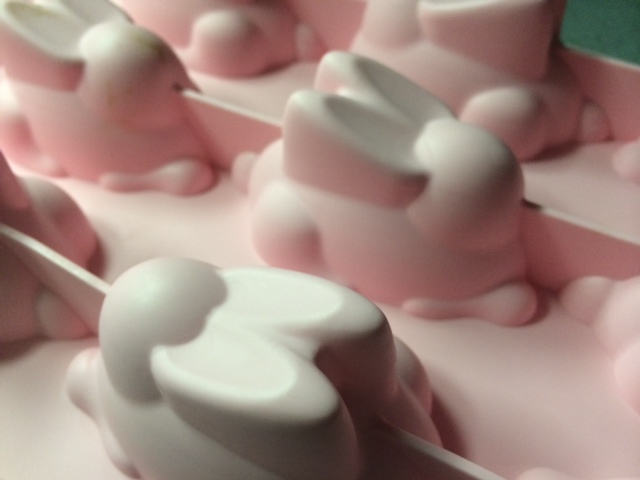However the Kosher for Passover Easter Bunny has not caught on. I am pretty sure it hasn’t been produced anywhere…ever. So when it came to obtaining a safe chocolate Easter bunny I was on my own.
When your list of “things to avoid” is as long as mine is, the store bought bunnies are just not going to work. Gluten-free bunnies are pretty easy to find, just think less expensive instead of more expensive. Nut free bunnies are also readily available. Gluten and dairy free Easter bunnies are challenging and then once you go to gluten-free, dairy-free, soy-free, nut-free and corn-free…you are out of luck.
So I bought some silicone molds and I made my bunnies this year. I would call it a learning experience. I learned the following from the process.
1) Do not grease silicone molds. Two of my bunnies look like they have a skin disease from where they did not stick to the the mold at all. Hence the lack of photos.
2) You need to melt in some solid shortening along with your allergen-free chocolate chips (Enjoy Life makes them) but not too much or the result is more like frosting. One tablespoon per cup of chocolate chips worked well.
3) Let the chocolate cool until it will stick to the sides of the mold, then spread it in
4) Let the chocolate cool on the counter until close to solid or it becomes very matte.
5) You can stuff the bunny (I did caramel and sunbutter) by lining the mold and then putting in the stuffing and then pouring chocolate over the top
6) Caramel stuffed bunnies need to be eaten all at once and are colossally messy.
7) Sunbutter filling can be made by mixing sunbutter and powdered sugar until its the texture of play clay. Then make a ball and pack it in.
All in all it was worth it to see his excitement at eating a bunny this morning. As I get better at making them I will post an actual recipe, but for now, know that it can, indeed, be done.




Curious as to where you found your cute bunny mold.
I don’t remember, I have had it for a few years at this point, but I think it was at Bed Bath and Beyond.